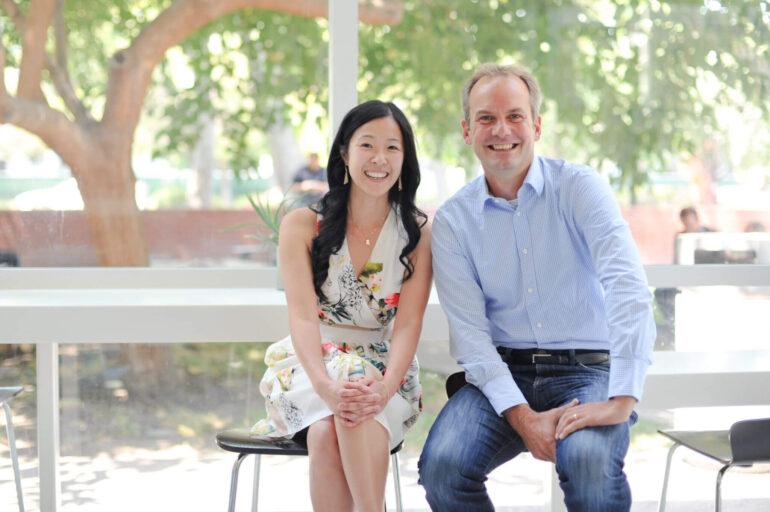While some new funds are providing fresh capital to the Canadian startup ecosystem, the data shows that venture capital activity and valuations are still on the decline. So what’s a founder to do if you’ve only just started your company in 2023—right on time to miss the COVID-19 stimulus-fueled boom cycle and see capital dry up?
For Angela Tran, General Partner at Version One Ventures, the answer is to more deeply understand and communicate your story. On the #CIBCInnovationBanking podcast, Tran shared more about the first major venture “winter” since the Great Recession and what founders can do about it today.
Too fast, too furious
When Angela Tran joined Version One Ventures in 2013, she did so with a mission to help founders with all of the details required to bring an idea to market. For her personally, this goes beyond the typical topics of funding and talent and into the “mental and emotional support that is required when building a company.”
In the nine following years, she, along with the entire VC ecosystem, saw record-breaking bull years as the economy shot back up after the Great Recession and global financial crisis. In Angela’s telling, this near-decade of growth set the stage for its own inevitable fall.
“It has been sunshine and rainbows for a really long time… And everything that goes up has to at least come down a little.”
“It has been sunshine and rainbows for a really long time for both founders who have seen their companies be valued at over billion dollars, or what we call unicorns, or for venture capitalists who now think that they are the best investors in the whole world because their investments look so great,” said Tran. “And everything that goes up has to at least come down a little.”
So as she looks at the steep drop in venture capital activity and valuations in 2023 compared to 2022 and 2021, she doesn’t quite see a crisis unfolding, but merely a return to average.
“This is kind of still in line and on par for the growth that we’ve seen since 2013,” said Tran. “It just means that we went too fast, too furious, and now things are just taking their time to slowly adjust.”
Know your story
For founders just getting started now, Tran’s advice is to focus on the same fundamentals as they might have in 2021 or any other boom cycle—albeit with a slightly different priority order.
“I don’t think it’s any different from before, except we really place a greater emphasis on ‘what is unique about you as a founder that puts you in the best position to build this company right now?’” Tran added.
Tran acknowledged this advice is not new but explained that in times of constrained capital—especially at the earliest stages when many founders only have an idea—knowing what sets you apart can give someone the confidence they need to invest.
In particular, she highlighted that your “why you, why now” story must tie to the market reality. It’s not that a big impact isn’t important—far from it—but founders need to start by explaining how that future impact connects to your business’ current bottom line. To illustrate this, she talked about the climate and energy sector, saying “we are all stakeholders on this earth.” But at the same time, pitching for investment needs more to the story.
“As a founder pitching to a VC, that macro story is just not strong enough,” said Tran. “We have to figure out how to tie this to a buyer who needs to buy your product today or is so desperate that they needed to buy it yesterday.”
Once you can explain that current business reality, that’s when talking about the future you want to build becomes important.
“When there are no metrics to invest in, we really are focused on thinking about what the future looks like with this company,” said Tran. “How much of an impact can this company make in a particular industry or on the world?”
Clearing a higher bar
The investing ecosystem is often referred to with seasonal terminology; a low point is called “winter,” for instance. But Tran noted that real change in tech comes from people, not nature. When new and ambitious people join an ecosystem, they bring “heat,” said Tran. This initial spark brings more heat in the form of investors and founders. Eventually, the ecosystem finds “summer.”
Yet in an ecosystem flush with money and opportunity, Tran noted a selection of people that she calls tourists: they are extractive and looking to cash in on a frenzy rather than build for impact. And an onslaught of tourists can lead to “fall” and winter yet again.
Right now, in the middle of a downturn, investors are wary of tourists. As a result of that hesitance, many potentially great founders aren’t getting the same access to capital they would have in a boom year. This is simple reality, but Tran said the capital pipes haven’t been completely shut off.
“There’s still access to money in general,” said Tran. “I think the difference being, as founders are now going out to fundraise, there’s just a higher bar that needs to be cleared.”


